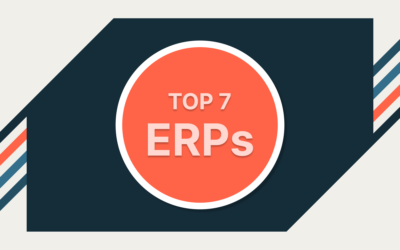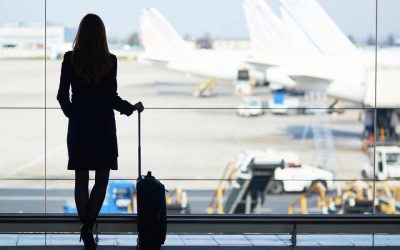The first time I created a virtual card, it felt a little magical. My request was automatically routed to my department head, who approved it within minutes via Slack. This allowed me to generate a card with one click. In the time it took to auto-share the card details with the vendor, the beauty of the logic became clear. A unique number generated for this payment sent a secure signal to move funds to the vendor, while also sending the information to my company’s GL for automatic booking. No card details lingering for inscrutable types to take advantage of. No expense reporting is needed, just a quick upload of the receipt. No need for the finance team to wait for information from me to close the books. Just a full audit trail of the transaction and an updated GL showing real-time spend. Magic!
Later, as I had an opportunity to interview some of our customers, I learned that they had taken the magic of virtual cards even further. With the option from within our spend management platform to effortlessly select a virtual card as a payment type to pay an invoice, they switched from a payment method that costs money to one that makes money. Since purchases made using virtual cards generate cash back for a company, shifting payments from ACH or check to virtual cards translates to a profit on each transaction. I’ve come to think of this as monetizing AP.
The Airbase platform makes this switch easy and obvious. It alerts bill payers to opportunities to earn cash back and tracks the potential savings. When a bill is scheduled for payment, Airbase lets you know if the vendor accepts card payments. You can even filter vendors to show which ones accept card payment in advance to make that acceptance part of your vendor preference criteria. Our spending insights reporting shows a running total of missed opportunities for cash back in prior bill payments so that you can quantify this benefit and take action.
In this scenario, accounting teams transform a payment type that costs them money into one that makes money for their company. Imagining accounts payable as a profit center is kind of cool.
A good example of this is from Lattice controller, Jason Lopez, who made a conscious decision to monetize his company’s AP. He shifted eligible expenses to Airbase’s virtual cards. “The cash back we earn is money that hits our account at the end of every month. It adds up and is enough to cover the cost of the very spend management software we use to make and manage our payments.”
Recharge’s controller, Eoin Hession, made a similar move and also quickly noticed the financial rewards. “It is absolutely helping to offset the cost of the Airbase platform,” he explains.
Whether the amount earned is viewed as offsetting a specific expense, or simply an extra income, these forward-looking finance pros are making sure that their companies aren’t leaving money on the table with this AP hack. In addition to making money, they also save by no longer using expensive payment types like checks, which are estimated by Bank of America to cost between $4 and $20 per payment. While not as dramatic, virtual cards also offer savings compared to making payments via ACH. Even though many banks provide a certain number of ACH payments each month for free, once the threshold is exceeded, the fees can add up.
Revenue from cash back adds up over time, as do savings from not spending money on checks or ACH payments. The example below shows this combined benefit using Airbase’s mid-level cash back but yours could be higher.
| Single payment | ||
| Cash back | $10,000 X 1.5% | +$150.00 |
| Cost of check savings | +$4.00 | |
| Net Gain to company from switch | +$154.00 | |
| Multiplied over a year assuming $5,000,000 annual spend | ||
| Cash back | $5,000,000 X 1.5% | +$75,000 |
| Cost of check savings on | est. 1000 payments | +$4,000 |
| Net Gain to company from switching from check to virtual card | +$79,000 | |
How to monetize AP.
Let’s assume that instead of creating a virtual card to make that payment myself, I had raised a PO in the Airbase system. I would have followed the same approval workflow by submitting a request that would be automatically routed to the right person, or people, for approval. The AP team receives the invoice for processing. At this point, AP could make a choice to execute payment from within the Airbase system using any one of a number of payment types: check, ACH, vendor credits, or an Airbase virtual card which includes cash back.
Fortunately, to prevent uncertainty on the best payment method, Airbase analyzes the uploaded invoice and other sources, and will indicate if the vendor will accept virtual card payment. It’s worth noting that vendors that accept traditional credit cards will always accept virtual cards, even if they have sent an invoice.
Transitioning to virtual card payments is easy when your bill payments are part of a one-stop spend management platform that consolidates all payment types into one bill payment system. It’s like having a command and control center for all non-payroll spend. All information is up front and instantly available, and all bills flow through the same process, eliminating the need to reconcile different platforms, providing a full view of company spending, and giving AP control over all payment types.
A wide array of prominent companies accept bill payments by cards for services in marketing, recruiting, operations, and more. Popular vendors include Apple, UPS, and Grubhub. Here are just a few examples of commonly used vendors.
Figma
Fivetran
G2
Greenhouse Software
HubSpot
Jamf
Lattice
Loom
Mode Analytics
NetSuite
Pendo
SalesLoft
Segment
Twilio
ZoomInfo
* Note that additional fees may apply depending on each vendor’s payment terms and conditions.
Then there are the types of vendors that many virtual card programs prohibit due to inherent security risks. Airbase doesn’t allow virtual card payments for the following:
- Security brokers/dealers.
- Dating/escort services.
- Massage parlors.
- Betting/casino gambling.
- Non-FI and wired money orders.
- Government-owned lotteries.
- Government-licensed horse/dog racing.
- Non-sport internet gaming.
Earn cash back and save on the costs of checks, ACH, and fraud.
As mentioned, the cost of writing checks and sending ACH payments can add up, but there are other important savings from using virtual cards. Incidents of payment fraud are rising, and the traditional ways of paying bills are particularly vulnerable. The 2022 AFP Payments Fraud and Control Survey found that 66% of surveyed businesses experienced fraudulent activity related to checks and 37% experienced fraudulent activity related to ACH debits.
The controls afforded by virtual cards eliminate a great deal of that risk because:
- A virtual card is vendor-specific and can only be used to pay that vendor.
- The card limit is pre-set to the bill amount and can’t be edited.
- A single-use card is automatically deactivated after it’s been charged.
Virtual cards are afforded the same protection that physical credit cards receive. For example, Airbase’s virtual cards are protected against unauthorized charges by VISA fraud protection.
Bonus benefits.
In addition to the revenue generated by cash back, virtual cards offer many other benefits, including:
- No 1099 obligations. Any 1099 reporting associated with a payment will be handled by the card company at year-end. This can save hours of extra work issuing 1099s.
- A built-in pre-approval process. In Airbase, spend approvals are obtained with the card creation.
- A full audit trail. Everything from approvals to the receipt is automatically captured in one place.
- A seamless sync to the general ledger. When transactions sync to the GL, you save reconciliation time for a faster monthly close.
- Full visibility into subscription spending. Airbase consolidates all subscription information in one central command center, so teams have insight across a company on virtual card use for subscriptions, and can plan for their upcoming renewals and contract expiries ahead of time. When requesting a virtual card, Airbase alerts the user to possible zombie spend and duplicate subscriptions.
When virtual cards are part of a bill payment platform, companies get all of the control mechanisms of a PO process (approvals and documentation) with the safety and convenience of a virtual card.
With the right card program, AP has a great tool at their disposal for making payments while also earning cash back. The cash earned by making this substitution may not turn AP into a profit center, but it surely distinguishes it as determined to improve the company’s bottom line. Isn’t it time you monetized your accounts payable? Let us show you how.
 Jira Integration – Streamline Your Workflows
Jira Integration – Streamline Your Workflows  Ironclad Integration – Simplify Legal Operations
Ironclad Integration – Simplify Legal Operations  Asana
Asana 




